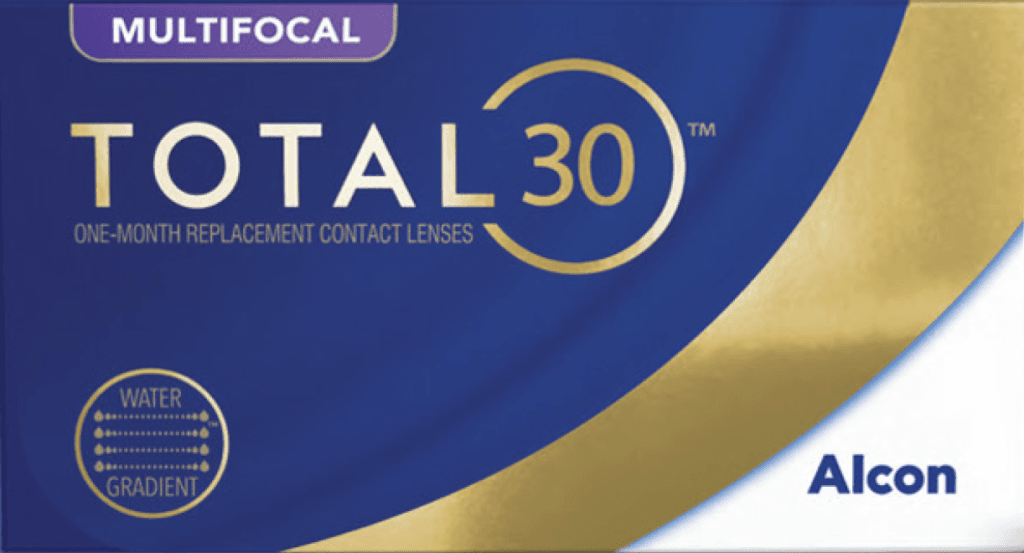TOTAL30 Multifocal
Alcon
Available Powers:
+6.00 to -10.00D (0.25D steps)
Fitting Instructions
Use the MyAlcon Fitting Hub or follow the instructions below:
- Start with a same-day spectacle Rx for all new and refit patients.
- Add +0.25D to the most plus vertex-corrected, spherical equivalent Rx for each eye to determine sphere.
- Add power based on lowest acceptable add:
- Up to 1.25 ADD = LO
- +1.50 to +2.00 ADD = MED
- +2.25 to +2.50 ADD = HI
- ALLOW FOR 5-10 MINUTES of real-world exposure outside the exam room before assessing visual performance. Have the patient look outside and use their digital device while they are waiting.
- With both eyes open, use hand-held lenses on each eye separately, by adding plus in 0.25D steps until the patient reports a decline in distance vision.
- Verify over-refraction binocularly by having the patient look at distance and near objects through the hand-held lenses.
- Keeping the ADD the same, apply new trial lenses based on the over-refraction results. If the patient’s vision is functional, dispense trial lenses for 5-7 days and schedule a follow-up visit.
Troubleshooting
Enhanced Near Vision
Step 4: To enhance near vision, determine the dominant eye by finding the lens with the greatest plus acceptance. For binocular vision, the non-dominant eye is the one that blurs least with a +1.50D lens.
Step 4A (Over-refraction)
For spectacle adds up to +2.50D, start with the recommended ADD power. To improve near vision, add a +0.50D lens to the non-dominant eye and have the patient assess their vision.
| Spectacle ADD | Dominant Eye | Non-Dominant Eye (plus accepted) |
|---|---|---|
| Up to +1.25 | LO | with additional +0.50 |
| +1.50 to +2.00 | MED | with additional +0.50 |
| +2.25 to +2.50 | HI | with additional +0.50 |
Step 4B (Adjusting ADD)
If near vision is still unsatisfactory after over-refraction, use the following guide.
| Spectacle ADD | Dominant Eye | Non-Dominant Eye (plus accepted) |
|---|---|---|
| Up to +1.25 | LO | MED |
| +1.50 to +2.00 | MED | HI |
| +2.25 to +2.50 | HI | HI |
Note: If a patient’s near vision is still poor with two high ADD lenses, a common reason is ghosting or poor image quality due to the high add power. Consider backing down to the MED ADD in one eye to see if that improves near vision.
Enhanced Distance Vision
Step 5: To improve distance vision, perform a spherical over-refraction to the dominant eye and adjust the ADD according to the chart below.
| Spectacle ADD | Dominant Eye | Non-Dominant Eye (plus accepted) |
|---|---|---|
| +1.50 to +2.00 | LO | MED |
| +2.25 to +2.50 | LO | HI |

